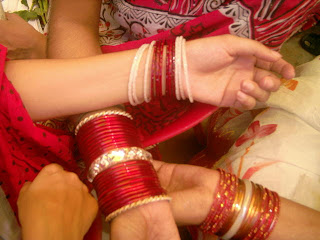Kuakata :
Kuakata, locally known as Sagar Kannya (Daughter of the Sea) is a rare charming beauty spot on the southernmost tip of Bangladesh. Kuakata in Latachapli union under Kalapara Police Station of Patuakhali district is about 30 km in length and 6 km in breadth. It is 70 km from Patuakhali district headquarters and 320 km from Dhaka. At Kuakata superb combination of the picturesque natural beauty, sandy beach, blue sky, huge spread of water of the Bay and evergreen forest in really eye-catching.
The name Kuakata have originated from Kua-Well dug on the sea shore by the early Rakhine settlers in quest of collecting drinking water, who landed on Kuakata coast after explled from Arakan by Moughals. Afterwards, it has become a tradition of digging Kua-Well in the neighborhood of Rakhaine homestead for collection water for drinking purpose and general use.
Magnetisms :
Kuakata is one of the rarest places which has the inimitable beauty of offering the full view of the rising and setting of crimson sun in the water of the Bay of Bengal in a calm environment. That perhaps makes Kuakata one of the world's unique beaches. The long and wide beach at Kuakata has a typical natural setting. This sandy beach has gentle slopes into the Bay of Bengal and bathing there is as pleasant as is walking or diving.
Kuakata is truly a virgin beach-a sanctuary for migratory winter birds, a series of coconut trees, sandy beach of blue Bay, a feast for the eye. Forest, boats plying in the Bay of Bengal with colorful sails, fishing, towering cliffs, surfing waves everything here touches every visitor's heart. The unique customs and costumes of the 'Rakhyne' tribal families and Buddhist Temple of about hundred years old indicate the ancient tradition and cultural heritage, which are objects of great pleasure Kuakata is the place of pilgrimage of the Hindus and Buddhist communities.
Horinghata
Horinghata is a place where you can see deer roaming around. In Horinghata forest sometimes the Royal Bengal Tiger is seen. Horin is a Bengali word for deer. So name itself express why it's called Horinghata. You can go to Horinghata from Borguna District.
immeasurable devotees arrive here at the festival of 'Rush Purnima' and 'Maghi Purnima'. On these two days they take holy bath and traditional fairs are held here. All these additional offers to panoramic beauty make the beach more attractive to the visitors. One should visit Kuakata and discover the lovely grace of Bangladesh.
Communication :
There exists road communication between Dhaka and Patuakhali district headquarters. Accessible by road, water or air transport up to Barisal. Then one may travel by road or water to Kuakata or Patuakhali.
BRTC has introduced direct bus service from Dhaka to Kuakata via Barisal. Besides that, Bangladesh Parjatan Corporation, National Tourism Organization may organize guided package tours from Dhaka to Kuakata on demand.
Where to stay:
There are some hotel and motels in Kuakata where you can stay, but Holiday Homes is the best place to stay in Kuakata. It is a motel of Bangladesh Parjatan Corporation and its better if you confirm your booking from Dhaka in advance.
Horinghata is a place where you can see deer roaming around. In Horinghata forest sometimes the Royal Bengal Tiger is seen. Horin is a Bengali word for deer. So name itself express why it's called Horinghata. You can go to Horinghata from Borguna District.
immeasurable devotees arrive here at the festival of 'Rush Purnima' and 'Maghi Purnima'. On these two days they take holy bath and traditional fairs are held here. All these additional offers to panoramic beauty make the beach more attractive to the visitors. One should visit Kuakata and discover the lovely grace of Bangladesh.
Communication :
There exists road communication between Dhaka and Patuakhali district headquarters. Accessible by road, water or air transport up to Barisal. Then one may travel by road or water to Kuakata or Patuakhali.
BRTC has introduced direct bus service from Dhaka to Kuakata via Barisal. Besides that, Bangladesh Parjatan Corporation, National Tourism Organization may organize guided package tours from Dhaka to Kuakata on demand.
Where to stay:
There are some hotel and motels in Kuakata where you can stay, but Holiday Homes is the best place to stay in Kuakata. It is a motel of Bangladesh Parjatan Corporation and its better if you confirm your booking from Dhaka in advance.
Other facilities :
A pond of crystal clean sweet water beside the motel attract the tourists.
For advance reservation and further details one may contact :
Central Reservation, Bangladesh Parjatan Corporation.
Head Office, 233, Airport Road, Tejgaon, Dhaka.

















